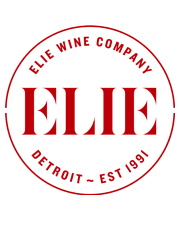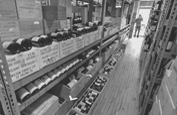Keeping Summer Alive with Rothschild Rosé
Barons de Rothschild “Les Lauriers” Rosé (2014, Bordeaux from Montagne-Saint-Émilion) ![]()
~$18/bottle
We’re not ready to give up on summer yet. There are still plenty of outside gatherings with friends ahead of us. Plenty of barbecues and trips up north to watch the sun set over a glimmering lake. Still time to pour glasses of crisp and dry pink wine that tastes of strawberries and raspberries and orange zest. And even after summer is but a memory, a crisp rosé works amazingly well as an apéritif or paired with cheesy appetizers or a salad course.
 Rothschild is one of the most recognizable names in the world of wine for good reason. Anyone with even a passing interest in Bordeaux has heard of the legendary “first growth” estate Château Lafite Rothschild – one of the most sought after and priciest wines on earth.
Rothschild is one of the most recognizable names in the world of wine for good reason. Anyone with even a passing interest in Bordeaux has heard of the legendary “first growth” estate Château Lafite Rothschild – one of the most sought after and priciest wines on earth.
The Bordeaux wine tradition in the French branch of the Rothschild family began in 1868 with the purchase of Chateau Lafite by Baron James Mayer de Rothschild. Over a hundred years later, his great grandson, Edmond, would extend the family tradition by acquiring two châteaux in Médoc and creating Compagnie Vinicole Baron Edmond de Rothschild. In 2003, after taking over the family business, Edmond’s son Benjamin purchased Château des Laurets, a property straddling the two appellations of Puisseguin-Saint-Émilion and Montagne-Saint-Émilion.
After significant renovation work, this “Right Bank” estate now boasts modern cellars and a new commitment to quality under Benjamin Rothschild’s helm. Les Lauriers’s vineyard is situated on the limestone and clay south facing slopes of Montagne-Saint-Émilion adjacent to Château des Laurets. This is Merlot country and Les Lauriers rosé reflects it with a blend of 70% Merlot, 20% Cabernet Franc, and 10% Cabernet Sauvignon.
- - -
Posted on 2015.08.01 in France, Bordeaux, Saturday Sips Wines | Read more...
French Inspiration, Mediterranean Soul
~$25 Principia Mathematica (Penedès, 2013)
~$25 Pas Curtei (Penedès, 2011)
~$79 Sot Lefriec (Penedès, 2006)
Travel south and west down the coast of Spain from Barcelona past golden, powdery sand beaches before heading inland to the Massís del Garraf – a mountain range characterized by limestone outcrops and calcerous soils from which swell an impenetrable scrub of holly oak, strawberry tree, rosemary, gorse, butcher’s broom and dwarf fan palm. As the Massís del Garraf resolves into the gentle slopes of the Penedès Plain you’ve entered ancient wine country.
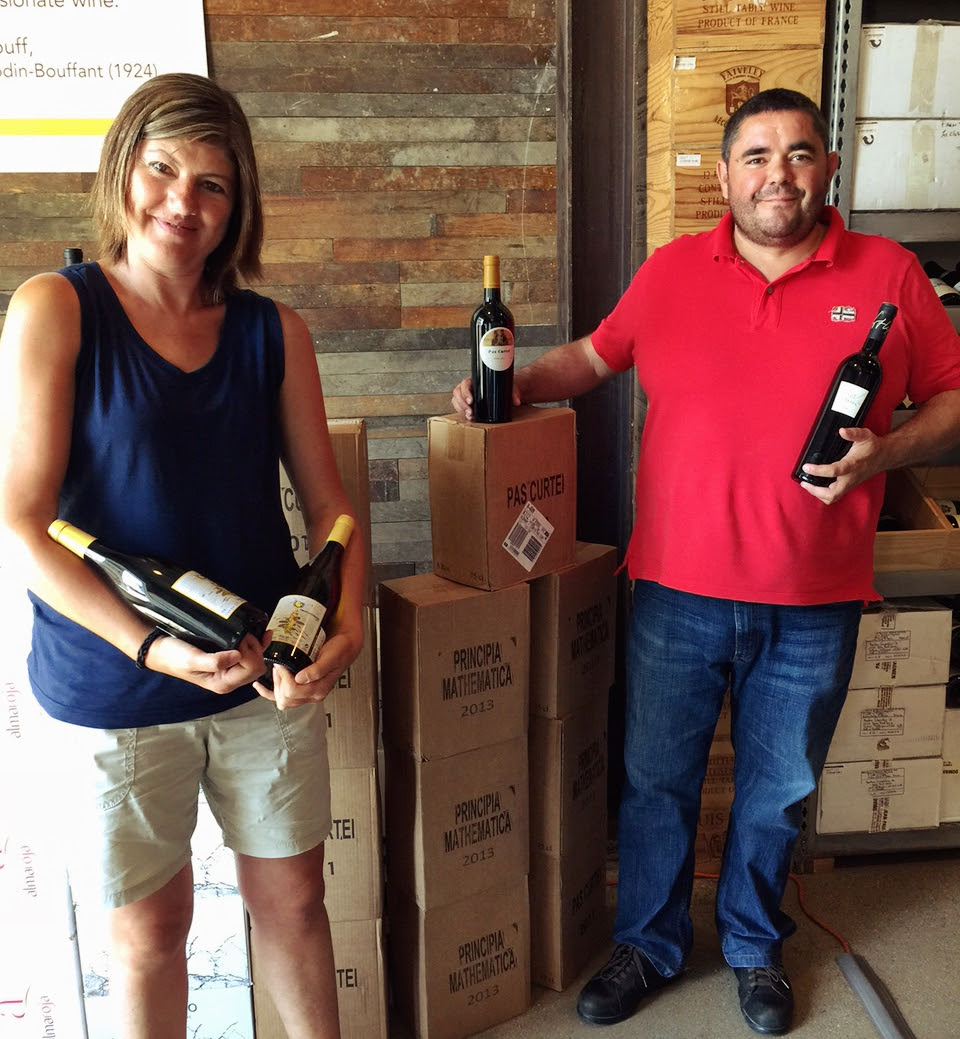 There, in the Alt Penedès, the most inland and mountainous subzone characterised by relatively low yield and high quality, passionate winemakers Irene Alemany and Laurent Corrio are producing a range of world-class wines. Their true “garage” winery is located in the center of Vilafranca del Penedès where they vinify by variety and batch. The couple, who met at the University of Burgundy in Dijon, apprenticed in vineyards in France and California before settling into the Penedès region to start their own operation using Irene’s family vines.
There, in the Alt Penedès, the most inland and mountainous subzone characterised by relatively low yield and high quality, passionate winemakers Irene Alemany and Laurent Corrio are producing a range of world-class wines. Their true “garage” winery is located in the center of Vilafranca del Penedès where they vinify by variety and batch. The couple, who met at the University of Burgundy in Dijon, apprenticed in vineyards in France and California before settling into the Penedès region to start their own operation using Irene’s family vines.
Today, the two are recognized as being among the top winemakers in all of Spain. All of their wines show classic French techniques expertly executed and a Mediterranean soul.
 Principia Mathematica (Penedès, 2013)
Principia Mathematica (Penedès, 2013)
Produced from 100% Xarel·lo (shah-REHL-loh), an indigenous grape variety that most Cava drinkers will recognize. 55 year old Xarel·lo vines from plots in Subirats and Garraf see fermentation in new French oak barrels of 228 and 700 liters. A third of the wine is then aged for nine months in stainless steel on the yeast (sur lie) with the remaining two thirds aged in oak barrels with occasional stirring (battonage). The result is a wine of freshness and depth that fully expresses a Burgundian style of winemaking alongside high coastal Mediterranean terroir. Dried stone fruits and subtle floral aromatics exude from a crisp and balanced juice finished by hints of citrus and hazelnuts. 525 cases total production.
 Pas Curtei (Penedès, 2011)
Pas Curtei (Penedès, 2011)
A blend of 60% Merlot, 20% Carinyena, and 20% Cabernet Sauvignon, Pas Curtei is aged for 14 months in a mixture of one, two, and three-year old French oak barrels. Texturally, the wine compares favorably with a high-quality Saint-Émilion from the Right Bank of Bordeaux. Remarkably fresh and balanced, herbs and berries, there is plenty of big fruit up front with a deep structure and long finish. It’s still a relatively young wine that you can drink now or hold for several more years. 1,250 cases total production.
![]() Sot Lefriec (Penedès, 2006)
Sot Lefriec (Penedès, 2006)
If Pas Curtei is equivalent to a high-quality Saint-Émilion than Irene and Laurent’s top cuvée, Sot Lefriec, is much like a Premier Grand Cru Classé from the same region. It is a blend of 50% Merlot, 30% Carinyena, and 20% Cabernet Sauvignon from the miniscule yields of their very best parcels. The wine is aged 23 months in French Oak barrels (70% new) and is only made in prime vintages. For the cellar or the dinner table, Sot Lefriec is bursting with spices and big, dark fruits. 5,500 bottles total production, only 300 bottles imported to the U.S.
- - -
Posted on 2015.07.30 in Saturday Sips Wines, Spain DO, Penedes | Read more...
Meet the Winemaker of Almaroja
$19.99 Almaroja “Pirita” White (Arribes, 2012) – SOLD OUT
$29 Almaroja “Pirita” Red (Arribes, 2011)
When winemaker and Englishwoman Charlotte Allen first beheld the western Spanish landscape of Las Arribes del Duero, on the border with Portugal, she was “overwhelmed by the savage beauty of the region: the deep gorges cut by the Duero, the steep terraces covered with ancient vines and even older olive trees, the way man had adapted himself to the landscape rather than bending it under his will.” Soon after she acquired about 15 acres, a cellar, and the byname “Carlota”.
 The journey up to that point saw her harvesting grapes and working in the cellar with Noël Pinguet at Domaine Huet in Vouvray, more harvests in South Africa and Italy, back to South Africa, and then to the Southern Rhône where she would study viticulture. Her dream of setting up her own domaine in France took a sharp turn after a trip to Spain where Didier Belondrade convinced her that an undiscovered area about two hours west of their meeting in Rueda was where she ought to be setting her sights. She now calls Arribes home.
The journey up to that point saw her harvesting grapes and working in the cellar with Noël Pinguet at Domaine Huet in Vouvray, more harvests in South Africa and Italy, back to South Africa, and then to the Southern Rhône where she would study viticulture. Her dream of setting up her own domaine in France took a sharp turn after a trip to Spain where Didier Belondrade convinced her that an undiscovered area about two hours west of their meeting in Rueda was where she ought to be setting her sights. She now calls Arribes home.
Despite the challenges of an Englishwoman living in a remote Spanish village, Carlota has been able to adapt, and coax some beautiful wines out of her old vines growing from granite soils. She employs organic and biodynamic methods in the vineyards and the wines are fermented using indigenous yeasts. Production is tiny with less than 300 cases of each wine made. The two Pirita wines are named for the for the mineral pyrite (fool’s gold) found throughout the vineyard soils.
Pirita White (Arribes, 2012)
 Carlota admits that she almost gave up on a white altogether because she just couldn’t seem to make a wine that she was completely happy with. But in 2010, after changing a few aspects of the winemaking, she finally had a white that she felt she could bottle and sell. Even then she was unsure of the demand, as many Spanish whites emphasize fruit and not the more mineral, food-friendly style she had created. But that year she sold out of all 125 cases. In 2012 she made a whopping 285 cases. A blend of Malvasía (Doña Blanca), Puesta en Cruz for texture and weight, and Verdejo Blanco (Godello), Pirita Blanco is aromatically complex and fills a glass with scents of almond, apricot, minerals and flowers. Stone fruits continue through a sip wrapped around a spine of fresh acidity. Summer wine.
Carlota admits that she almost gave up on a white altogether because she just couldn’t seem to make a wine that she was completely happy with. But in 2010, after changing a few aspects of the winemaking, she finally had a white that she felt she could bottle and sell. Even then she was unsure of the demand, as many Spanish whites emphasize fruit and not the more mineral, food-friendly style she had created. But that year she sold out of all 125 cases. In 2012 she made a whopping 285 cases. A blend of Malvasía (Doña Blanca), Puesta en Cruz for texture and weight, and Verdejo Blanco (Godello), Pirita Blanco is aromatically complex and fills a glass with scents of almond, apricot, minerals and flowers. Stone fruits continue through a sip wrapped around a spine of fresh acidity. Summer wine.
Pirita Red (Arribes, 2011)
 In an ongoing quest for perfection, each vintage Carlota makes subtle adjustments to the Pirita Rojo blend. The base variety for the 2011 vintage is 65% Juan García, a low-growing bush vine native to the region that produces medium-bodied, brilliantly colored, and highly aromatic wines. The remainder of the blend is comprised of the local Rufete and Bruñal grapes and a touch of Tempranillo. Although most vintages of Pirita are aged in a small percentage of new oak barrels, Carlota decided not to use any for 2011, as she believed the wine was already structurally balanced. Only 250 cases were produced. If you are in the mood for a glorious red wine and cheese pairing try a bottle of Pirita with Zamorano, the famous aged sheep’s milk cheese of the Zamora province where Carlota makes her wines.
In an ongoing quest for perfection, each vintage Carlota makes subtle adjustments to the Pirita Rojo blend. The base variety for the 2011 vintage is 65% Juan García, a low-growing bush vine native to the region that produces medium-bodied, brilliantly colored, and highly aromatic wines. The remainder of the blend is comprised of the local Rufete and Bruñal grapes and a touch of Tempranillo. Although most vintages of Pirita are aged in a small percentage of new oak barrels, Carlota decided not to use any for 2011, as she believed the wine was already structurally balanced. Only 250 cases were produced. If you are in the mood for a glorious red wine and cheese pairing try a bottle of Pirita with Zamorano, the famous aged sheep’s milk cheese of the Zamora province where Carlota makes her wines.
- - -
Posted on 2015.07.23 in Saturday Sips Wines, Spain DO, Arribes | Read more...
Going Native in Northwestern Spain
Dominio del Urogallo “Pésico” (2013)
~$28/Bottle
Nicolás Marcos clearly likes a challenge. He left his family’s winery in Toro, where generations had made wine previous, did a stint with the distinguished Alain Graillot in Crozes-Hermitage, and then settled into the northwestern region of Asturias, specifically Cangas del Narcea. Gastronomically, Asturias is perhaps best known for its apple orchards that produce some of Spain’s best sidra (hard cider), its cheeses, and the famous bean stew fabada. Nico was determined to show the world that the soil, micro-climate, and indigenous grape varieties of Cangas del Narcea were capable of delivering world-class wines. That determination has translated into success.
Wine making in Cangas dates back to the 9th century. Wines made here can presently use the “Vino de Calidad” designation but with the work of serious grower/winemakers like Nico the region is currently heading toward official DO status, the highest level of specificity in the Spanish wine regulation system.
Growing grapes in Cangas is no simple task. Vineyards are subject to the vagaries of the humid Cántabro-Atlántica climate and Nico’s parcels are on hillsides so steep they probably should be worked by mountain climbers. On top of all that, Nico has chosen to forgo artificial chemicals and work all of his vines using biodynamic principles. Yet he’s no crunchy hippie. Besides restoring his vineyards (many with vines over 100 years old) back to health, Nico believes that these holistic farming methods help create wines of balance, personality and varietal expression. And we did say he likes a challenge.
Only 700 cases produced, Pésico is a blend of equal parts Carrasquín, Mencía, Verdejo Tinto, and Albarín Tinto, all grape varieties indigenous to the region. Nico vinifies the juice from about 18 acres spread over parcels from four different crus. Each parcel is fermented separately with indigenous yeast before blending and partial aging in French oak barrels (including second year barrels from Domaine de la Romanée-Conti). This is truly a wine that speaks of the land, ripe yet fresh, bursting with blue fruits and layers of texture before a lengthy finish.

- - -
Posted on 2015.07.16 in Saturday Sips Wines, Misc Spanish, Spain DO | Read more...
Cava – The Sparkling Wine of Spain + Art by Ed Fraga
Valldolina Cava Reserva “Brut Nature”
~$18/Bottle
While your sipping this scandalously drinkable wine with aromas of apple blossom, wheat crackers, and sunshine, enjoy nine new works at our inaugural Wine & Art series, Ed Fraga : Fugitive Speculations. Fraga’s paintings and drawings are in the collections of the Detroit Institute of Arts, Cranbrook Art Museum, Flint Institute of Arts and The Federal Reserve Bank of Chicago.
Champagne gave the world its thirst for sparkling wine, Catalunya gave the world Cava. Both are made using the traditional method (méthode champenoise in the Champagne region) that requires a minimum amount of bottle aging where the wines develop their trademark depth and complexity. Yet the two distinct climates, soils and grape varieties produce wines that truly speak of place.
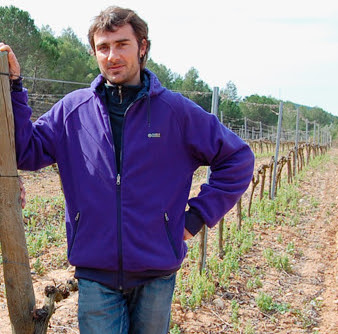 Almost all Cava production is centered in the Penedès region of Spain a short distance southwest of the city of Barcelona. But it’s the mountainous sub-zone of the Massís del Garraf where soil and microclimate yield fruit with the concentration and balance required for singular, world-class, sparkling wine. This superior geography is home to visionary winemaker Raimon Badell of Celler Masia Can Tutusaus. Rai believes in making contemporary wines that respect Mediterranean culture without becoming mired in convention. Certified biodynamic in Spain, he has the utmost respect for his vines and soil.
Almost all Cava production is centered in the Penedès region of Spain a short distance southwest of the city of Barcelona. But it’s the mountainous sub-zone of the Massís del Garraf where soil and microclimate yield fruit with the concentration and balance required for singular, world-class, sparkling wine. This superior geography is home to visionary winemaker Raimon Badell of Celler Masia Can Tutusaus. Rai believes in making contemporary wines that respect Mediterranean culture without becoming mired in convention. Certified biodynamic in Spain, he has the utmost respect for his vines and soil.
A value at twice the price, the current release of Cava Valldolina Brut Nature Reserva is a blend of the holy trinity of Cava grapes: 37% Xarel-lo, 32% Macabeu, and 24% Parellada, with a dash of Chardonnay. The vintage is 2012 and disgorgement is April 2015, giving this over 26 months of bottle aging, just a few months shy of gran reserva, the highest possible classification for Cava. The “Brut Nature” designation signifies no added sugar (dosage), creating a wine that Rai contends is the highest expression of Cava.
It’s low in alcohol, and perfect for summertime gatherings on the patio. It’s also the ideal vehicle for a splash of fruit juice to add a bit of sweetness and lower the alcohol further, or a splash of liqueur for a rich apéritif.
Are we sampling wine in a gallery atmosphere, or viewing art in a wine shop atmosphere? However you see it, it should be part of your Saturday or Sunday afternoon plans.
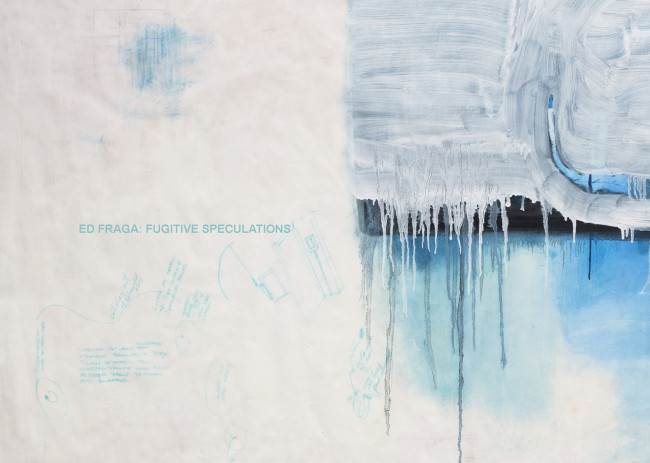
“Art is the understanding of beauty through the senses, and in order to understand the dream of a Vinci, or the inner life of a Bach, one must, I repeat, be capable of adoring the scented and fugitive soul of a passionate wine.” – Marcel Rouff, La Vie et la Passion de Dodin-Bouffant (1924)
- - -
Posted on 2015.07.08 in Saturday Sips Wines, Spain DO, Cava | Read more...
Featured Wines
- Notebook: A’Boudt Town
- Saturday Sips Wines
- Saturday Sips Review Club
- The Champagne Society
- Wine-Aid Packages
Wine Regions
Grape Varieties
Aglianico, Albarín Blanco, Albillo, Aleatico, Alicante Bouschet, Altesse, Arcos, Aubun, Auxerrois, barbera, Beaune, Bonarda, Cabernet Franc, Cabernet Sauvignon, Caino, Caladoc, Carcajolu-Neru, Carignan, Chablis, Chardonnay, Chasselas, Chenin Blanc, Cinsault, Cortese, Corvina, Corvinone, Cot, Erbamat, Ferrol, Fiano, folle Blanche, Frappato, Friulano, Fromenteau, Fumin, Garganega, Garnacha, Gewurztraminer, Godello, Grenache, Grolleau, Jacquère, Lambrusco, Lladoner Pelut, Loureira, Macabeo, Macabou, Maconnais, Malvasia, Malvasia Nera, manseng, Marsanne, Melon de Bourgogne, Mencía, Merlot, Mondeuse, Montanaccia, Montepulciano, Morescola, Morescono, Moscatell, Mourv, Mourvèdre, Muscadelle, Nebbiolo, Nero d'Avola, Palomino, Parellada, Pecorino, Persan, Petit Meslier, Petit Verdot, Pinot Auxerrois, Pinot Blanc, Pinot Meunier, Pinot Noir, Poulsard, Prieto Picudo, Rondinella, Rose, Roussanne, Sangiovese, Sauvignon Blanc, Savignin, Semillon, Souson, Sparkling, Sylvaner, Syrah, Tannat, Teroldego, Timorasso, Trebbiano, Treixadura, trepat, Trousseau, vaccarèse, Verdicchio, Viognier, ViuraWines & Events by Date
- September 2025
- August 2025
- July 2025
- June 2025
- May 2025
- April 2025
- March 2025
- February 2025
- January 2025
- December 2024
- November 2024
- October 2024
- September 2024
- August 2024
- July 2024
- June 2024
- May 2024
- April 2024
- March 2024
- February 2024
- January 2024
- December 2023
- November 2023
- October 2023
- September 2023
- August 2023
- July 2023
- June 2023
- May 2023
- April 2023
- March 2023
- February 2023
- January 2023
- December 2022
- November 2022
- October 2022
- September 2022
- August 2022
- July 2022
- June 2022
- May 2022
- April 2022
- March 2022
- February 2022
- January 2022
- December 2021
- November 2021
- October 2021
- September 2021
- August 2021
- July 2021
- June 2021
- May 2021
- April 2021
- March 2021
- February 2021
- January 2021
- December 2020
- November 2020
- October 2020
- September 2020
- August 2020
- July 2020
- June 2020
- May 2020
- April 2020
- March 2020
- February 2020
- January 2020
- December 2019
- November 2019
- October 2019
- September 2019
- August 2019
- July 2019
- June 2019
- May 2019
- April 2019
- March 2019
- February 2019
- January 2019
- December 2018
- November 2018
- October 2018
- September 2018
- August 2018
- July 2018
- June 2018
- May 2018
- April 2018
- March 2018
- February 2018
- January 2018
- December 2017
- November 2017
- October 2017
- September 2017
- August 2017
- July 2017
- June 2017
- May 2017
- April 2017
- March 2017
- February 2017
- January 2017
- December 2016
- November 2016
- October 2016
- September 2016
- August 2016
- July 2016
- June 2016
- May 2016
- April 2016
- March 2016
- February 2016
- January 2016
- December 2015
- November 2015
- October 2015
- September 2015
- August 2015
- July 2015
- June 2015
- May 2015
- April 2015
- March 2015
- February 2015
- January 2015
- December 2014
- November 2014
- October 2014
- September 2014
- August 2014
- July 2014
- June 2014
- April 2014
- March 2014
- February 2014
- January 2014
- December 2013
- November 2013
- October 2013
- September 2013
- August 2013
- July 2013
- June 2013
- May 2013
- April 2013
- March 2013
- February 2013
- January 2013
- December 2012
- November 2012
- October 2012

